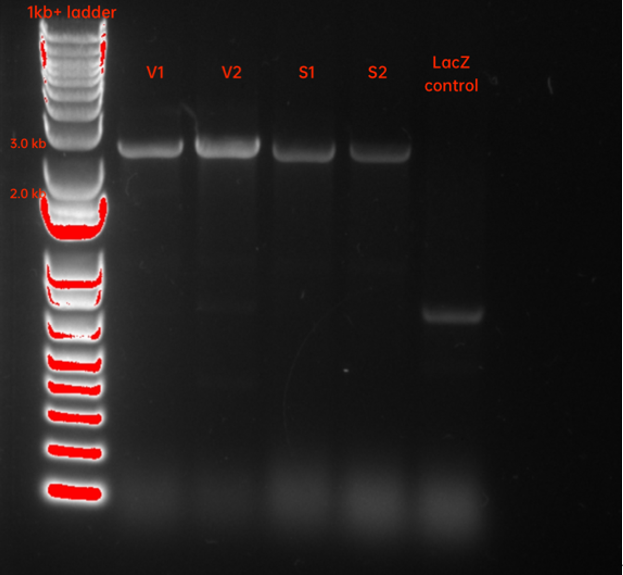Difference between revisions of "Part:BBa K4390091"
(→Characterization) |
(→Reference) |
| (One intermediate revision by the same user not shown) | |
(No difference)
| |
Latest revision as of 14:03, 12 October 2022
Untagged MHETase
This part is not compatible with BioBrick RFC10 assembly but is compatible with the iGEM Type IIS Part standard which is also accepted by iGEM.
Usage and Biology
We designed the Untagged MHETase aiming for generating MHETase with MHET hydrolysis function and being a control for silica tagged MHETase constructs.
MHETase is an enzyme discovered in Ideonella sakaiensis at the same time as PETase (Yoshida, 2016). MHETase can hydrolyse Mono-(2-hydroxyethyl) terephthalic acid (MHET), the major product of PETase, further to terephthalic acid (TPA) and ethylene glycerol (EG). An advantage of using MHETase is that PETase degrades PET into MHET majorly, and MHET had a higher inhibitory effect on the overall hydrolysis of PET since it also originated from the other reaction product, that is, from BHET. Since TPA and EG did not affect the enzyme hydrolysis of PET, the observed inhibition caused by MHET and BHET is probably due to their ester bonds that occupy the TfCut2 substrate binding site (Pirillo, V, et al., 2021). From literature, there is a ∼60 Å long intrinsically disordered tether structure (residues 1–25) at the N-terminus of the MHETase (Pinto et al., 2021).
Design
Untagged MHETase was assembled by JUMP assembly with: T7 promoter (P part)-B0034 RBS (RN part)-MHETase (O part)-L1U1H08 (CT part). All the codon is optimized for BioBrick and JUMP assembly.
Characterization
All the Lv.0 parts for [Untagged MHETase] were integrated into pJUMP29-1A(Laz), which is a JUMP Lv.1 backbone plasmid. The Blue-White screening was conducted to select the correct colony. The colony PCR was used to verify the band size of colony PCR product was the same as in silico simulation. The primers used were (PS1: AGGGCGGCGGATTTGTCC; PS2: GCGGCAACCGAGCGTTC), the general primers for all JUMP plasmids to amplify the insertion DNA. The size of Untagged MHETase PCR product (Figure 1. S1 and S2) was corresponding to 2235 bp in silico.

Figure 1. Agarose gel shows the PCR result of [Untagged MHETase] (agarose concentration 1.2%). The lanes are labelled with letters, and the number behind each letter represent different colonies from Blue-White Screening. S: Untagged MHETase. V: N-terminal Car9-tagged MHETase. The ladder used: 1 kb DNA Ladder from NEB (N3232S).
After being transformed with the Lv.1 plasmid [Untagged MHETase] into E.Coli Shuffle strain, the cells grew and were sonicated for solubility test. The weight of Untagged MHETase should be around 65 kDa, which is corresponding to the red line in S lane (Figure 2).

Figure 2. SDS-PAGE gel showed the solubility test result of [Untagged MHETase] fusion proteins. The lanes were labelled with letters, and the number behind each letter represented different fractions of the cell samples. S: Untagged MHETase. T: N-terminal L2NC-linker-tagged MHETase. V: N-terminal Car9-tagged MHETase. The ladder used: P7718S protein ladder from NEB.
Sequence and Features
- 10COMPATIBLE WITH RFC[10]
- 12COMPATIBLE WITH RFC[12]
- 21COMPATIBLE WITH RFC[21]
- 23COMPATIBLE WITH RFC[23]
- 25COMPATIBLE WITH RFC[25]
- 1000COMPATIBLE WITH RFC[1000]
Reference
Yoshida S, Hiraga K, Takehana T, Taniguchi I, Yamaji H, Maeda Y et al. A bacterium that degrades and assimilates poly (ethylene terephthalate). Science. 2016;351(6278):1196-1199.
Pirillo V, Pollegioni L, Molla G. Analytical methods for the investigation of enzyme‐catalyzed degradation of polyethylene terephthalate. The FEBS Journal. 2021;288(16):4730-4745.
Pinto A, Ferreira P, Neves R, Fernandes P, Ramos M, Magalhães A. Reaction Mechanism of MHETase, a PET Degrading Enzyme. ACS Catalysis. 2021;11(16):10416-10428.
